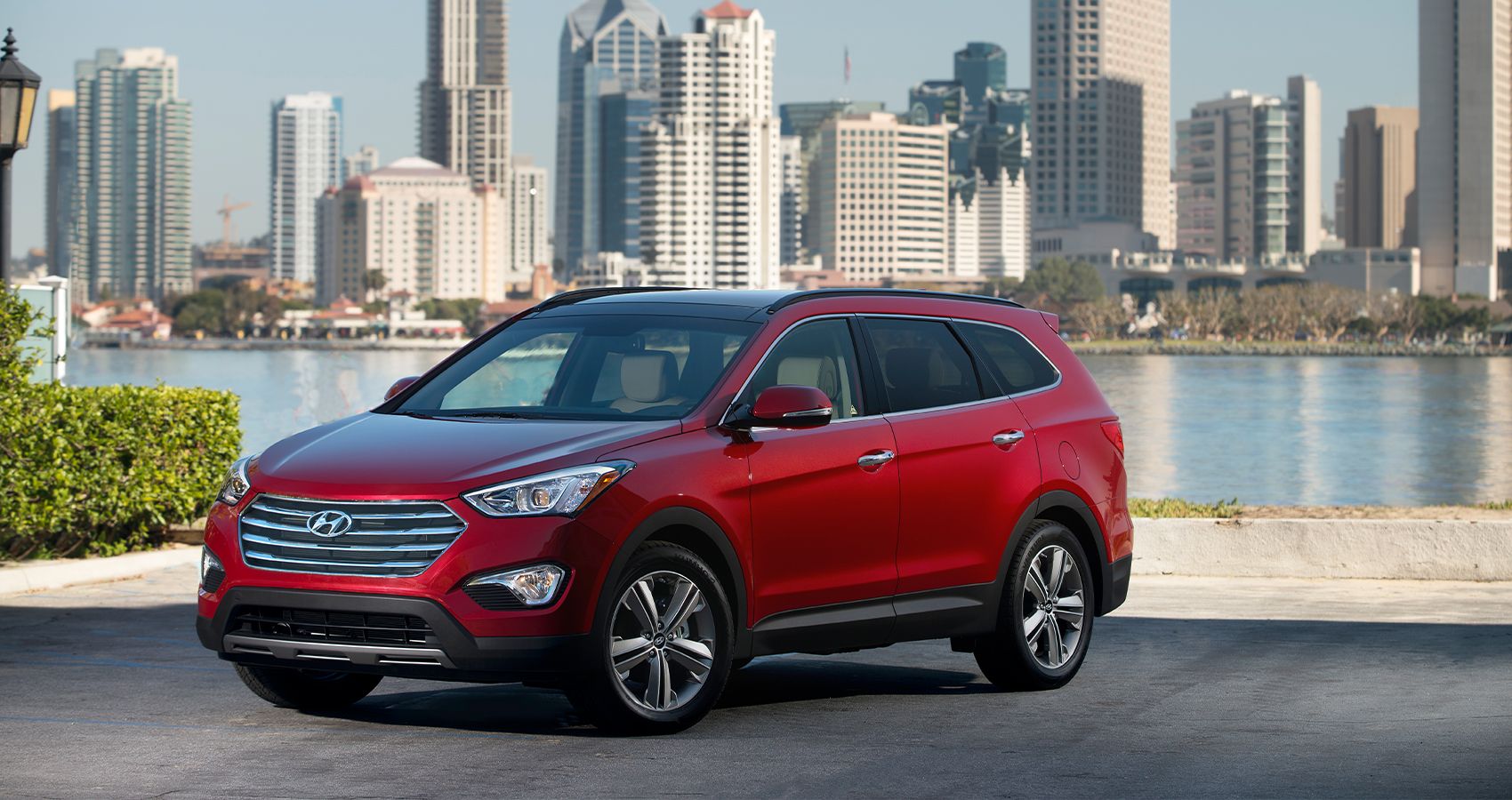Hyundai‘s midsize sedan, the Santa Fe, became a popular choice for families across North America after its dramatic redesign in 2018. One of the segments where this Korean SUV shines the most is safety. With a lot of standard tech features, the Santa Fe is one of the safest family SUVs under the $40,000 mark.
Santa Fe’s recent reputation made earlier models considerably popular for buyers on a budget. However, not every model year offers the best value for your buck. Without further ado, let’s take a look at the Hyundai Santa Fe’s worst years, its reliability and longevity, and everything else you need to know before buying one on the used market.
2012, 2013, And 2017 Are Among Hyundai Santa Fe’s Most Problematic Model Years

According to the Car Complaints website, 2012 was the worst model year for the Hyundai Santa Fe due to expensive engine overhauls. From almost 100 registered complaints, over 50 report issues with stalls while driving, leading to engine failure well below the 100,000-mile mark. On average, owners had to spend $5,100 to swap the engine with a new one.
Another problematic area concerning the 2012 Santa Fe is the electrical system. Owner reports registered with the National Highway Traffic Safety Administration (NHTSA) website mention various problems, including gauge lights flickering, check engine and check brakes lights turning on intermittently, and exterior lights going out.
The 2014 Santa Fe is plagued with similar engine problems as the 2012 model. “I was driving home in my Santa Fe, and my engine suddenly lost power in the middle of the highway. I had to call a tow truck to bring my Santa Fe to my mechanic shop. The next day my mechanic told me my engine is broken down,” quoted one owner on Car Complaints in May 2017. Some owners managed to replace the engine under warranty, those who had a failed engine after 50,000 miles had to spend thousands of dollars to fix their SUV.
Several owners have reported that the steering in their 2014 Santa Fe fails to keep the car in the same lane, forcing drivers to keep their hands on the steering all the time to avoid wandering off at highway speeds. Most owners couldn’t find a permanent solution for this issue, even after taking their vehicle to the workshop several times.
The automatic transmission in the 2017 model has caused a lot of headaches for the owners. The reports indicate that the transmission hesitates, slips, and fails to shift to the right gear upon acceleration properly. “Pressing the gas pedal results in a 2 to 3-second delay before the transmission will suddenly downshift, and we’ll go blasting off. This is really dangerous because we’ve had nearly a dozen instances of ending up extremely close to being nearly rear-ended,” said one owner regarding their 2017 Hyundai Santa Fe.
Last but not least, there are several reports concerning the 2017 Santa Fe’s steering. Like the 2014 model, owners have mentioned the vehicle drifting to one side at highway speeds. Thankfully, most owners have been able to omit the issue by replacing the steering column.
With Regular Maintenance, You Can Expect 200,000 Miles From A Hyundai Santa Fe

According to various reliable sources, a Hyundai Santa Fe can offer anywhere between 150,000 to 200,000 miles of reliable service.
The average driver in the US puts out roughly 14,000 miles a year. For the Santa Fe, that translates to about 10 to 15 years before needing any expensive engine or transmission overhauls. However, if you’re the third or the fourth owner of a Santa Fe, you should conservatively expect problems to pile up after 100,000 miles.
Following the manufacturer’s suggested maintenance schedule is vital to keep a Hyundai Santa Fe up and running. Some of the important services include:
- After 7,500 miles/6 months: inspect the air cleaner filter, the battery, and the vacuum hose, change the oil, and rotate the tires.
- After 15,000miles/12months: Inspect driveshafts, exhaust pipe, front brake disc and pads, steering gearbox, and suspension mounting bolts.
- After 30,000 miles/24 months: inspect the brake fluid, fuel filter, fuel tank air filter, and the parking brake, and replace the air cleaner filter.
According to the RepairPal website, the annual cost of ownership for a Hyundai Santa Fe sits at $515, slightly below the average of $573 for the midsize SUV segment.
The Hyundai Santa Fe Can Be A Long-Lasting SUV, So Long As You Avoid Problematic Model Years

An abundance of features and a below-average price tag makes the Hyundai Santa Fe an excellent family hauler. If you’re in the market for a used one, avoiding the 2012, 2014, and 2017 models would be a safer bet. Expensive engine and transmission problems in these models occur at low mileage.
Other than that, make sure to check the powertrain with a trusted mechanic before purchasing a used Hyundai Santa Fe.
Comments are closed.